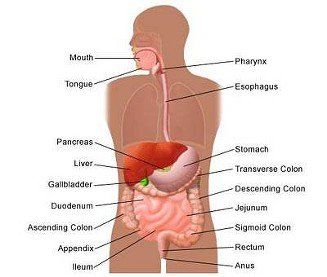
Caring for your upper gastrointestinal (GI) tract
Diet, environment, and heredity are the 3 main factors that can lead to many disorders associated with the upper gastrointestinal (GI) tract. If left, these disorders can lead to a variety of diseases and / or symptoms.
By having an upper gastrointestinal (GI) endoscopy performed, these disorders can be diagnosed easily, safely, and comfortably.
This procedure may involve a biopsy. A biopsy is where a tiny tissue specimen is attained for microscopic analysis. An upper gastrointestinal (GI) endoscopy may also lead to the removal of a polyp or tumor. This is done by using a thin wire snare and electrocautery (electrical heat).
An upper gastrointestinal (GI) endoscopy can diagnose the following:
- Intestinal bleeding
- Difficulty in swallowing
- Upper abdominal pain or indigestion
- Tumors of the stomach or esophagus
- Gastritis: an inflammation of the lining of the stomach
- Ulcers: developed in the esophagus, stomach, or duodenum
- Esophagitis and heartburn: a chronic inflammation of the esophagus

Frequently asked questions:
Q. Where is the upper gastrointestinal tract and why is it important?
A. The upper gastrointestinal tract begins with the mouth and continues with the esophagus (food tube) which carries food to the stomach. The acid in the stomach churns food into small particles. The food particles then enter the duodenum, or small bowel, where bile from the liver and digestive juices from the pancreas mix with it to help the digestive process. Both bile and enzymes are needed to digest food, so it is important to diagnose any problems as quickly as possible.
Q. What exactly is an endoscope?
A. An endoscope is flexible tube with a tiny, optically sensitive computer chip at the end. As the physician moves it through the upper gastrointestinal tract, electronic signals are transmitted from the scope to a computer that displays the image on a video screen. An open channel in the scope allows other instruments to be passed through it to take tissue samples, remove polyps and perform other exams.
Q. What happens during the EGD procedure?
A. First, your physician will anesthetize your throat with a spray or liquid. The endoscope is then gently inserted into the upper esophagus. The exam takes from 15 to 30 minutes, then you are taken to the recovery area. There is no pain with the procedure and patients seldom remember much about it.
Q. Is any preparation necessary before the procedure?
A. It is important not to eat or drink anything for at least eight hours before the exam. Your physician will give you instructions about the use of regular medications, including blood thinners, before the exam. Because of the mild sedation, you are not allowed to drive, operate heavy machinery or make any important decisions for up to six hours following the exam. It’s important to have someone with you to drive you home.
Q. What happens after the procedure?
A. After the exam, the physician will explain the results to you. If the effects of the sedatives are prolonged, the physician may suggest a follow-up appointment to review your results. If a biopsy has been performed or a polyp removed, it usually takes several days to get the results.
Q. Should I expect complications or side effects?
A. A temporary, mild sore throat sometimes occurs after the exam. Serious risks with upper gastrointestinal endoscopy, however, are very uncommon. One such risk is excessive bleeding, especially if a large polyp is removed. In extremely rare instances, a perforation, or tear, in the esophagus or stomach wall can occur. These complications may require hospitalization and, rarely, surgery.
Q. What is Fuse™?
A. Fuse™, or ‘full spectrum endoscopy,’ is the latest advancement in colon cancer screenings and endoscope technology used in colonoscopy and upper GI endoscopy. It allows the physician a 245-degree field of view during the procedure.
Q. Will the procedure or my risks be any different if my physician uses Fuse™ technology?
A. As a patient, your prep and your experience during the procedure, as well as any potential risks, are exactly the same as if your physician used a traditional endoscope. The difference with Fuse endoscopes is experienced by the physician, not the patient.
Keep yourself healthy with advanced medical care
Did you know that Southland Gastroenterology Medical Group Inc has 3 office locations and 2 endoscopy centers to serve you?
Enjoy a safe and comfortable atmosphere when you choose Southland Gastroenterology Medical Group Inc for all your endoscopy needs.
Hemet
951-929-1177
Murrieta
951-672-7885
Sun City
951-304-3900
